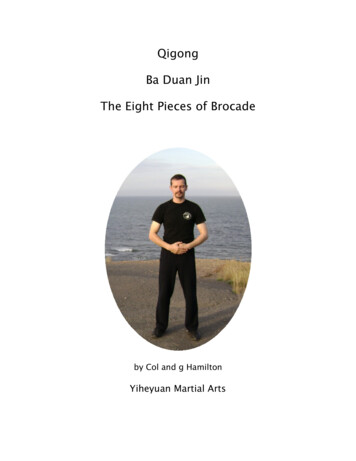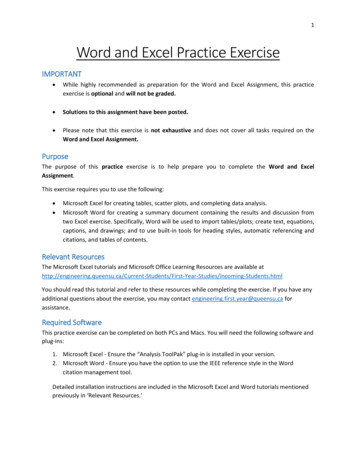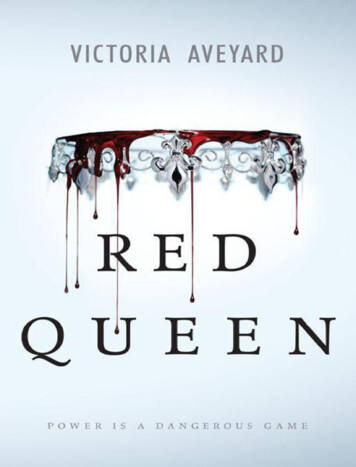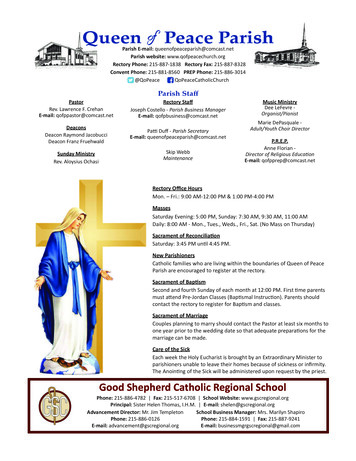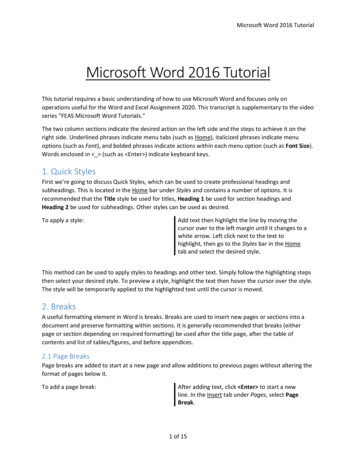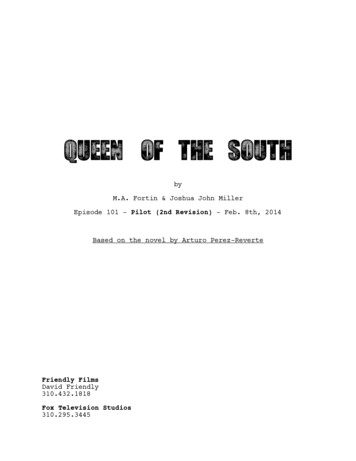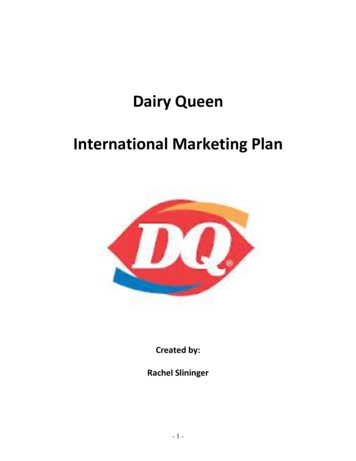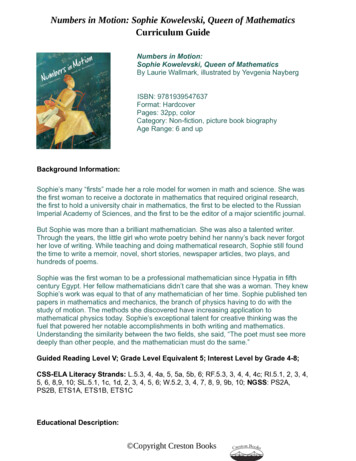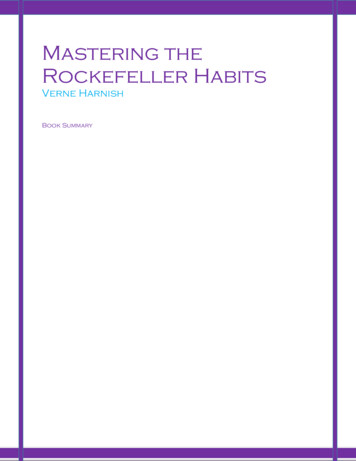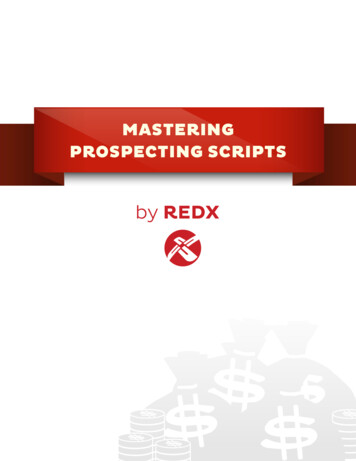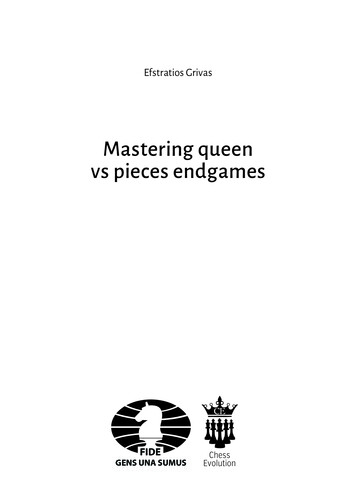
Transcription
Efstratios GrivasMastering queenvs pieces endgamesFIDEGENS UNA SUMUSChessEvolution
Cover designerPiotr PielachTypesettingPiotr Pielach ‹www.i-press.pl›First edition 2016 by Chess EvolutionMastering queen vs pieces endgamesCopyright 2016 Chess EvolutionAll rights reserved. No part of this publication may be reproduced, stored in a retrieval systemor transmitted in any form or by any means, electronic, electrostatic, magnetic tape, photocopying, recording or otherwise, without prior permission of the publisher.ISBN 978-615-80713-1-4All sales or enquiries should be directed to Chess Evolution2040 Budaors, Nyar utca 16, Magyarorszage-mail: info@chess-evolution.comwebsite: www.chess-evolution.comPrinted in Hungary
TABLE OF CONTENTSKey to symbols . 5Introduction .7Editorial preface.9Bibliography .11CHAPTER 1. QUEEN VS QUEEN & BISHOPQueen & Pawns vs Queen & Bishop . 17Queen & Pawns vs Queen & Bishop & Pawns . 21CHAPTER 2. QUEEN VS QUEEN & KNIGHTQueen & Pawns vs Queen & Knight. 35Queen & Pawns vs Queen & Knight & Pawns .39CHAPTER 3. QUEEN VS ROOKQueen vs Rook & Pawn .63Queen vs Rook & Pawns. 80Queen & Pawns vs Rook & Pawns . 90Queen vs Two Rooks . 115Queen vs Two Rooks & Pawns .117Queen & Pawns vs Two Rooks & Pawns . 127Queen vs Rook & Minor Piece . 163Queen vs Rook & Two Minor Pieces . 184Queen vs Two Rooks & Minor Piece .190Queen & Minor Piece vs Two Rooks . 195CHAPTER 4. QUEEN VS BISHOP & PAWNSQueen vs Two Bishops . 212Queen vs Two Bishops & Pawns. 218Queen & Pawns vs Two Bishops & Pawns . 221
CHAPTER 5. QUEEN VS KNIGHT & PAWNSQueen vs Two Knights . 253Queen vs Two Knights & Pawns . 259Queen & Pawns vs Two Knights & Pawns . 266CHAPTER 6. QUEEN VS BISHOP & KNIGHTQueen vs Bishop & Knight & Pawns .279Queen & Pawns vs Bishop & Knight & Pawns.285CHAPTER 7. QUEEN VS THREE MINOR PIECESQueen vs Four Minor Pieces.297Two Queens vs Various Material . 300Curriculum Vitae .307
KEY TO SYMBOLS Equality or equal chancesWhite has a slight advantage Black has a slight advantage White is better - Black is better White has a decisive advantageBlack has a decisive advantageunclear with compensation with counterplay with initiative with an attack with the idea only moveN!!!?!?! #noveltya good movean excellent movea weak movea blunderan interesing movea dubious movecheckmate
INTRODUCTIONDear Reader,As you may already be aware, the publishing house ‘Chess Evolution’ is printing a series called ‘The Modern Endgame Manual’ which will consist primarilyof eight books and will deal with everything concerning the endgame.I was surprisingly pleased when the Editor in Chief, GM Arkadij Naiditsch,asked me to write two of the total eight books. But I was a bit ‘disappointed’when it was made clear to me that I would have to deal with a quite difficultsubject: Queen vs Pieces Endgames!But OK, nothing is really difficult nowadays. The modern author has at his disposal powerful databases, tablebases, analysed material, books and, by addinghis knowledge, you will alwys find what you are looking for!The endgame is a phase of the game that has been extensively analysed andformed to concrete conclusions, although in nearly all the books I know of,very little space is dedicated to the queen vs pieces endgame subject.I think this is mainly because of space limitations and because it’s a difficulttheme that doesn’t appear too interesting for the readers. But a modern chessplayer cannot really choose what he likes or prefers — this has nothing to dowith openings!Today we have shorter time-controls and there isn’t really enough time todig around on the subtleties of each ending. You have to know and to repeatknowledge; don’t be carried away by the usual myth of the ‘chess talent’. AsI have repeatedly written and proved, ‘talent is the excuse of the failed’.‘Unfortunately’, the modern chess player is entitled and forced to work morethan his predecessors. The modern chess trainer also needs to prepare moredelicate themes, understand them and then teach them to his students as well.So, there is plenty of room for everything and for everybody who is thirstyfor knowledge.
Knowledge is the key word, and knowledge is absorbed sub-consciously; it isimpossible to remember everything you study. So, it is highly important towork with good material and good trainers in order to improve towards the‘Chess Olym-pus’.Nowadays the help of the Silicon Monster (chess analysis engines) is quitevaluable, as it can save an author countless hours of analysis and checking.But still the role of the qualified trainer remains important; he knows wherethe truth is — he knows what to keep and what to throw away I do not want to hold a high nose and claim that everything I have written isperfect and completely sound; I am always aware of the surprise factor andI just try to write honestly and with responsibility.As an author, I feel that I should especially congratulate four important figuresof our chess literature world: Alexander Baburin, Karsten Muller, John Nunnand Jan Timman. Dr. John Nunn was kind enough to permit me to publishhis analysis of the game Piket-Nunn, Wijk aan Zee 1990 — I truly thank him!Finally, I would like to thank three readers who each contributed valuable timeand effort to check and correct my work:– Former FIDE Women World Champion, GM & FST Antoaneta Stefanova.– Endgame Expert & Author, GM Karsten Müller.– Lecturer in Computer Science, who has championed advances in the creation and use of chess endgame tables, Guy Haworth.Have a nice reading journey!Athens, 2016Efstratios Grivas
EDITORIAL PREFACEIn this series of nine endgame books, FIDE Senior Trainer Adrian Mikhalchishin, FIDE Senior Trainer Efstratios Grivas and IGM Csaba Balogh combine their experience as trainers and as practical players to create somethingvery special.The authors aim for very understandable explanations of every endgame position in each book.The specification: 1st book — Queen and pawn endgames. 2–3 — Minor piece endgames (bishop and knight endgames). 4–5 — These will feature the fight between different material constellations. 6–8 — These books are going to focus on the most common endgames,which are of course rook endings. 9th — This book will focus on exchanges and simplifications.The main concept of each book is to provide theoretical knowledge which canbe used in practical games. It means the focus of the books will be on positions which are the most likely to occur - and the practical playing of them.That’s why you will firstly meet the theoretical part, and secondly the practicalexamples of how games actually continued in a particular endgame.Yes, you’re right, you won’t find too many very complicated studies, stunningmanouevres or rarely-appearing positions — and there is a simple reason whynot!How often do we see positions, for example two knights vs pawn where oneknight is blocking the pawn and the other one tries to get the king to the corner before releasing the second knight for the mate? Or constellations withcrazy material on the board? This might happen in one game out of 100! Youcould spend hundreds of hours working on something that might bring you“only” a single point more out of 100 games!
Our approach is quite different: let’s make more points in the other 99 games!And who knows, we might also be lucky in the remaining one, but actually,statistically, it would almost not matter.“The Modern Endgame Manual” will make an expert out of you in most ofthe endgames which are going to appear in your long career as a chess player!
BIBLIOGRAPHY1.2.3.4.5.A Chess Odyssey; Efstratios Grivas; Chesscafe.com 2007 & FIDE 2013Advanced Chess School — Volumes 1–7; Efstratios Grivas; FIDE 2014–2016British Chess Magazine; Various Contributors; BCM 1987–2009British Chess Magazine; Various Contributors; BCM 1987–2016Chess Analytics — Training with a Grandmaster; Efstratios Grivas; RusselEnterprises 20126. Chess College 1: Strategy; Efstratios Grivas; Gambit 20067. Chess College 2: Pawn Play; Efstratios Grivas; Gambit 20068. Chess College 3: Technique; Efstratios Grivas; Gambit 20069. Chess Expertise Step by Step Vol. 1 — Unexpected Tactics; Efstratios Grivas; Chessbase 201110. Chess Expertise Step by Step Vol. 2 — Mastering Strategy; Efstratios Grivas; Chessbase 201111. Chess Expertise Step by Step Vol. 3 — Rook Handling; Efstratios Grivas;Chess-base 201112. Chess Expertise Step by Step Vol. 4 — Endgame Magic; Efstratios Grivas;Chess-base 201113. Chess for Tigers; Simon Webb; Oxford University Press 197814. Chess Today (Internet Newspaper); Alexander Baburin; 2006–201615. ChessBase Endgame Surveys; Karsten Müller; Chessbase 2010–201316. ChessBase Magazine — Strategy; Daniel King; ChessBase 2000–201017. ChessBase Mega Database; Various Contributors; ChessBase 201618. Dvoretsky’s Endgame Manual; Mark Dvoretsky; Russel Enterprises 200319. Endgame Corner; Karsten Mueller; Chesscafe.com 2001–201320. Exploring the Endgame; Peter Griffiths; A & C Black 198421. Fundamental Chess Endings; Karsten Müller & Frank Lamprecht; Gambit200122. Informator; Various Contributors; Informator 1966–201623. Learn from the Legends; Mihail Marin; Quality Chess 200424. Middlegame Motifs; Nigel Davies; ChessCafe 2009–201025. Modern Chess Planning; Efstratios Grivas; Gambit 200726. Montreal 1979; Mikhail Tal; Pergamon 198027. My System; Aaron Nimzowitsch; Hays Publications 199128. New In Chess (Magazine & Yearbook); Various Contributors; InterchessBV 1984–2016
29. Power Chess with Pieces; Jan Timman; New in Chess 200430. Practical Endgame Play — Mastering the Basics; Efstratios Grivas; Everyman 200831. Secrets of Minor-Piece Endings; John Nunn; Batsford 199532. Secrets of Modern Chess Strategy; John Watson; Gambit 199833. The European Team Championship — Bath 1973; Raymond Keene; Batsford 197434. The Middlegame; Euwe / Kramer; Hays Publications 199935. The Sacrifice of the Exchange; Imre Pal; Imre Pal 200236. The Seven Deadly Chess Sins; Jonathan Rowson; Gambit 200137. Trivial Endings — Revealing the Secrets; Efstratios Grivas; FIDE 201338. Wikipedia — Various Articles; Wikipedia 201639. Zurich 1953; David Bronstein; Dover Publications 1979The above sources were my main help and guide while writing this book.I would like to thank the (rest) of the authors for their contributions to chessliterature and the chance they gave to all chess players to become better. Wikipedia was quite helpful too!If I forgot to ‘mention’ somebody or if I used ‘modified’ material and didn’tmention the original author, I want to apologize. Obviously I didn’t do it onpurpose; I don’t need to, as I am capable of writing and analysing things myself. I am just getting old and sometimes my collected old material fails toremind me exactly who did what
CHAPTER 1.QUEEN VS QUEEN & BISHOPMany interesting endings can arisefrom the rare opposition of a queenagainst a combination of majorand minor pieces. We can accept asa general rule that, when there areno pawns on the board, the superiorside can win if its material advantageis at least one rook (using standardized material value).Without pawns, the ending of queenvs queen & bishop is drawn. Naturally, there do exist (as always) a fewexceptions in which the defendingking is caught in an uncomfortableposition.It has been proven that the bishopside can win when his king is nearenough to co-operate with the rest ofhis forces.Usually, however, the queen and bishop don’t co-operate in a successfulmanner due to the bishop’s restriction to only the half of the squareson the board.1 Ni Hua Wu WenjinBeijing 2001- - - KwQ7 - - - 6 - - - L 5 - - - 4 - - - - 3 -
Fundamental Chess Endings; Karsten Müller & Frank Lamprecht; Gambit 2001 22. Informator; Various Contributors; Informator 1966–2016 23. Learn from the Legends; Mihail Marin; Quality Chess 2004 24. Middlegame Motifs; Nigel Davies; ChessCafe 2009–2010 25. Modern Chess Planning; Efstratios Grivas; Gambit 2007 26. Montreal 1979; Mikhail Tal; Pergamon 1980 27. My System; Aaron Nimzowitsch .
